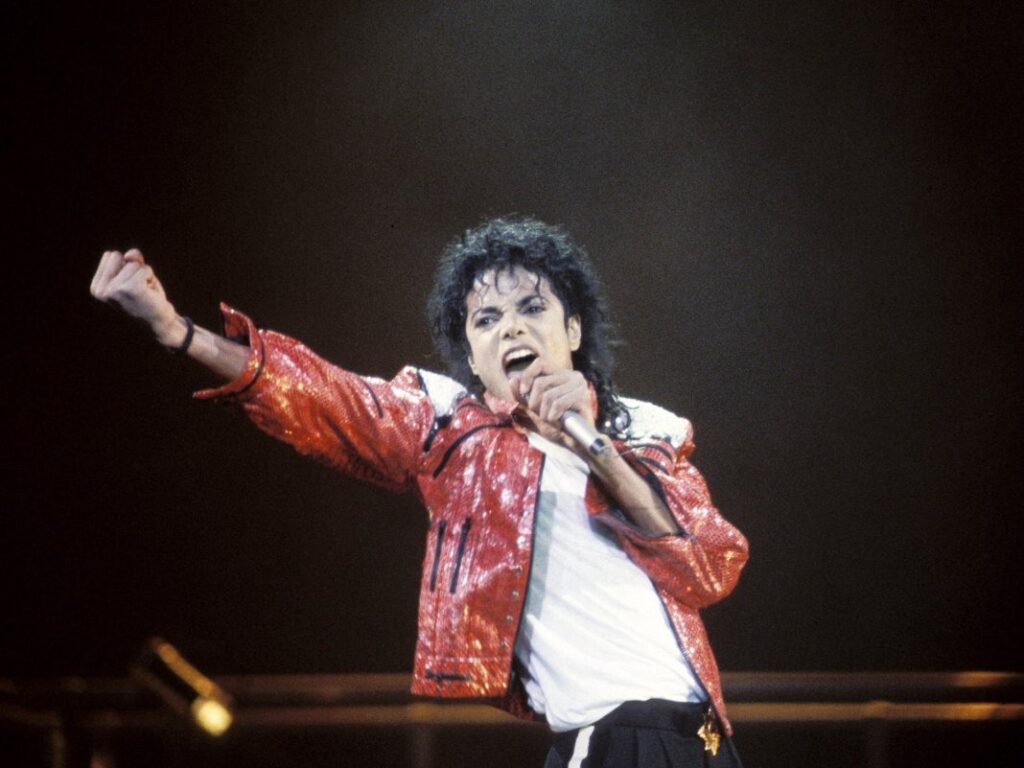A brief history of rock music leading the discussion of environmentalism
Written by WOM writer on February 7, 2023
Since it burst onto the scene in the 1950s and became a potent cultural zenith, rock music has largely been a force for good. From challenging archaic social mores to helping subvert oppressive political systems, there are many examples of the art form leading the way. One of the most important aspects of rock music being a righteous mass of energy is that it has been at the forefront of the environmentalism dialogue for decades. For as long as many can remember, some of the most prominent rockers have been opening the eyes of the world to the stark reality: look after mother nature or face total annihilation.
For centuries, environmentalist themes have been present within music. Traditionally, folk was the area most concerned about the well-being of our natural surroundings, with the theme really coming to the fore in the 1930s and ’40s.
Then, in the 1950s and ’60s, it was through a host of influential folk musicians that the emergent offshoot of rock music would be inspired to take up the mantle of guiding the environmental discussion. Many factors have accounted for the theme making its way into music. However, the most significant is that corporations and governments started pushing the earth to its limits for financial gain during this era. Society is only now coming to terms with the implications of such wanton destruction.
Environmentalism is believed to have entered popular music through three notable works. The first comes from Peter LaFarge, a folk singer-songwriter associated with heavyweights Bob Dylan and Johnny Cash. In 1963, LaFarge released As Long as the Grass Shall Grow, a collection of native American songs discussing environmental destruction.
This demonstrates music’s historical connection to environmentalism, with the native Americans acutely aware of the impending earthly doom centuries ago. In addition, it also displays how vital the 1960s were for environmental activism in music. During this decade, a tremendous shift in society’s thinking occurred. Thanks to the influence of the civil rights movement, the Beat Generation, feminism and the counterculture movement, people started to alter their perception of the world and their position in it. Society began to wake from its centuries-old slumber and largely unquestioned submission to the masters, with civil action flourishing.
The second moment of note is folk/blues singer Malvina Reynolds’ 1964 hit ‘What Have They Done to the Rain’. The track protested above-ground nuclear testing because of the prospect of the radioactive Strontium-90 entering the food chain through acid rain. This hazardous moisture could fall on grazing grasslands, be eaten by cows, and then be consumed by humans in turn. Reynolds’ piece was hugely influential, with Marianne Faithfull and Joan Baez both covering the song and spreading the message further afield.
The third example is Pete Seeger’s 1966 album God Bless the Grass. The record focuses on environmental issues and explains why mother nature is just so inspiring. The LP takes its title from one of the trio of Malvina Reynolds originals included. Evidently, Reynolds had a significant impact on music’s ability to stand up for the environment.
Now that music was heavily politicised due to the work of folk artists and the broader shift in society, the visceral uproar of rock was ready to lead the environmentalist charge. In addition, other elements afforded greater impetus to the environmentalist message. These were the disastrous 1969 Santa Barbara oil spill and the 1970 National Environmental Policy Act that followed it. As a reaction to these incidents – thanks partly to the influence of rock musicians – the inaugural Earth Day arrived in 1970. Greenpeace was then established the following year.
Arguably the most notable moment in rock leading the environmental discussion comes from Joni Mitchell’s 1970 folk-rock hit, ‘Big Yellow Taxi’. The song is brimming with disgust at the proverbial man destroying our surroundings for profit, as Mitchell mentions the colourless insecticide DDT and grasps its impact with disdain. Importantly, however, the simplicity of her pastiche makes the mindlessness of the concrete sprawl patently obvious. You didn’t have to be a National Geographic subscriber to catch her drift. When speaking to Robert Hilburn in 1996, the Canadian songstress discussed writing the song as a reaction to man’s devastation of the planet: “I wrote ‘Big Yellow Taxi’ on my first trip to Hawaii,” she began. “I took a taxi to the hotel, and when I woke up the next morning, I threw back the curtains and saw these beautiful green mountains in the distance. Then, I looked down, and there was a parking lot as far as the eye could see, and it broke my heart […] this blight on paradise. That’s when I sat down and wrote the song.”
Elsewhere in 1970, Joni Mitchell, James Taylor and Phil Ochs organised a benefit concert in Vancouver. It was to raise money for a boat, the Phyllis Cormack, which sailed a group of Don’t Make a Wave Committee activists to the Alaskan island of Amchitka in opposition to the nuclear testing the US Government was undertaking there. The concert and voyage had a primary influence on the foundation of Greenpeace. This tied rock music and environmental activism together forever. After that moment, they would march into the future as separate sides of the same coin.
Surf-rockers The Beach Boys also waded into the discussion. On 1971’s Surf’s Up, they caught everyone’s attention with the pieces ‘Don’t Go Near the Water’ and ‘A Day in the Life of a Tree’, which outlined their grave concern for the environment. The former is a somewhat ironic warning to the listener to avoid going into the dirty sea because of dumping. As for the latter, it is a much more profound reflection of band leader Brian Wilson and manager Jack Rieley’s disdain for the treatment of the planet. Famously, Rieley contributed lead vocals to the track.
As Rieley explained: “Brian Wilson and I had been talking a lot about the sorry state of the planet back then. He was filled with questions, and we went on for hours about it. Forests were dying, the air had turned brown, the earth’s future was beginning to appear hazardous to health. When Brian first played the chords and sang the tentative melody for me, he asked what the song should be about, and I suggested a single tree as metaphor for the earth; that single tree as metaphor for more than ecology. I fell in love with the chords at once and loved the swelling tension of that droned bass line; the song seemed to lend itself to the lyrical concept. He went nuts for the lyrics when I showed them to him. Loved ’em, memorised the first verse and was singing around the house. Carl and I were positive that Brian had to sing ‘A Day in the Life of a Tree’.”
 Joni Mitchell has long been an advocate of environmentalism. (Credit: Alamy)
Joni Mitchell has long been an advocate of environmentalism. (Credit: Alamy)
Another force for good, an artist who has long defended the environment, is Canadian troubadour Neil Young. Back in 1970, he penned the emotive title track of his hit album After the Gold Rush about the most pressing issue of our time. The following line encapsulates the song’s ethos: “look at Mother Nature on the run in the 1970s”.
As part of his 2012 biography, Young explained that the inspiration came from a screenplay of the same name that was never produced. It told the story of California’s last days amid a catastrophic flood, with the title referring to the state’s origins in the Gold Rush. Young concluded: “‘After the Gold Rush’ is an environmental song… I recognise in it now this thread that goes through a lot of my songs; that’s this time-travel thing… When I look out the window, the first thing that comes to my mind is the way this place looked a hundred years ago.” This was a nebulous theme that Jim Morrison would also use as a central tenet as the counterculture movement became cognizant of just how fast the times were a-changing and looked towards a semblance of timelessness.
Outside of countercultural acts, one rock subgenre that put the environmental message at the forefront of proceedings was the first wave of punk. Three of the genre’s most influential earliest groups would share their thoughts with fans.
Firstly, X-Ray Spex frontwoman Poly Styrene explored the implications of pollution in 1978’s ‘The Day the World Turned Day-Glo’. Secondly, The Clash’s frontman Joe Strummer spoke of the destruction of the ozone layer in their biggest hit, ‘London Calling’, the following year. Thirdly, the track ‘Cesspools in Eden’ from Dead Kennedys’ 1986 final album, Bedtime for Democracy, discusses the dumping of toxic waste in Jello Biafra’s typically on-the-nose style.
The 1980s saw a host of rock stars use their status to spread the word about environmentalism. These included the most successful group of the decade, U2, alongside older countercultural heavyweights such as George Harrison and Grateful Dead.
Notably, the 1985 benefit record Greenpeace – The Album featured the likes of Queen, Tears for Fears, Madness and The Pretenders. After this symbolic moment of rock coming together for the environment, the likes of Prince, Sting and R.E.M. successfully campaigned for record labels to phase out additional CD packaging to reduce their carbon footprints.
In the 1990s, punk would also voice its mission to save the planet more vociferously than ever before. This was thanks to the dominance of straightedge and veganism in the hardcore scene. Indicative of this, standard bearers Fugazi would mention environmentalism at points. In the track ‘Styrofoam’ from 1990’s Repeater, Ian MacKaye bellows: “We are all bigots, so full of hatred, we release our poisons like styrofoam.”
Many different subgenres of heavy metal have also featured environmental themes, including thrash and black metal. Two prominent outfits to adopt the stance are Metallica and Sepultura. The former explored it on 1988’s ‘Blackened’, with the latter releasing a host of songs discussing issues in their native Brazil, including climate change and deforestation. Famously, ‘Ambush’ from 1996’s The Roots of Sepultura, was an open tribute to the murdered environmental campaigner Chico Mendes.
Barney Greenway, frontman of grindcore pioneers and perenially political outfit Napalm Death, has also been vocal about his concern for the environment. A long-term vegan, when speaking to EMP at Bloodstock Festival in 2021, he said: “I’ve been a vegetarian since I was 14 years old. So 38 years I’m a vegetarian. Vegan for just over ten years now. To be honest, I was pretty much always vegan. There was just a couple of things in my diet, but then I was just, like, ‘Why do I need to eat these things?’ So I cut it out.”
“Everybody finds their own way,” he continued. “But the bigger point to it is that I think now people have more of an intergral understanding of basically preserving the environment — the very environment that we live in. Intensive farming is not sustainable; it can’t continue. So I know the whole planet is gonna have to adapt to a more plant-based diet.”
As the impending environmental doom was brought into complete focus in the 2000s, rock and music, in general, stepped up their efforts to stem the tide of oblivion. In 2007, the worldwide concert, Live Earth, was held in multiple locations to raise awareness and prompt more action. The UK leg saw the likes of Bloc Party, Beastie Boys, Red Hot Chili Peppers and Foo Fighters take to the stage. As for their American counterpart, Fall Out Boy, Taking Back Sunday, AFI, The Smashing Pumpkins and Roger Waters all appeared.
The necessity for collective action to save the environment has become all the more pressing over the past 15 years, with the sea levels rising and tasters of environmental disasters starting to occur more frequently. This has seen a greater volume of contemporary rock acts using their art to lead the charge. Two notable examples include Gorillaz’s hit 2010 album Plastic Beach, which focuses on plastic pollution, and King Gizzard and the Lizard Wizard’s 2019 thrash album Infest the Rats’ Nest, which is climate change-themed.
Clearly, rock music will continue to fight for the environment until the very end. And fortunately, it is now looking towards being more sustainable itself while it leads the charge, thanks to charities that offset tour emissions. The beauty of music is that it has the ability to put things simply and powerfully; it has been doing that for the environment for a while now, and long may it continue.
Source: Arun Starkey – faroutmagazine.co.uk
Image: Chris Zhang – unsplash.com





